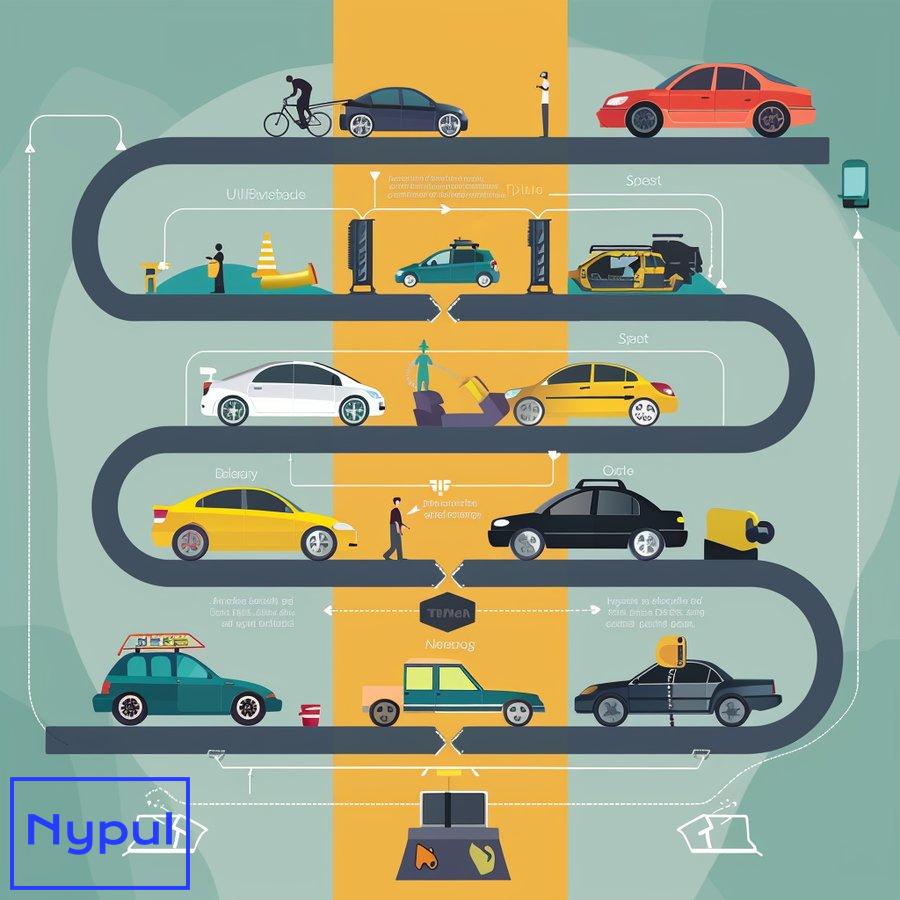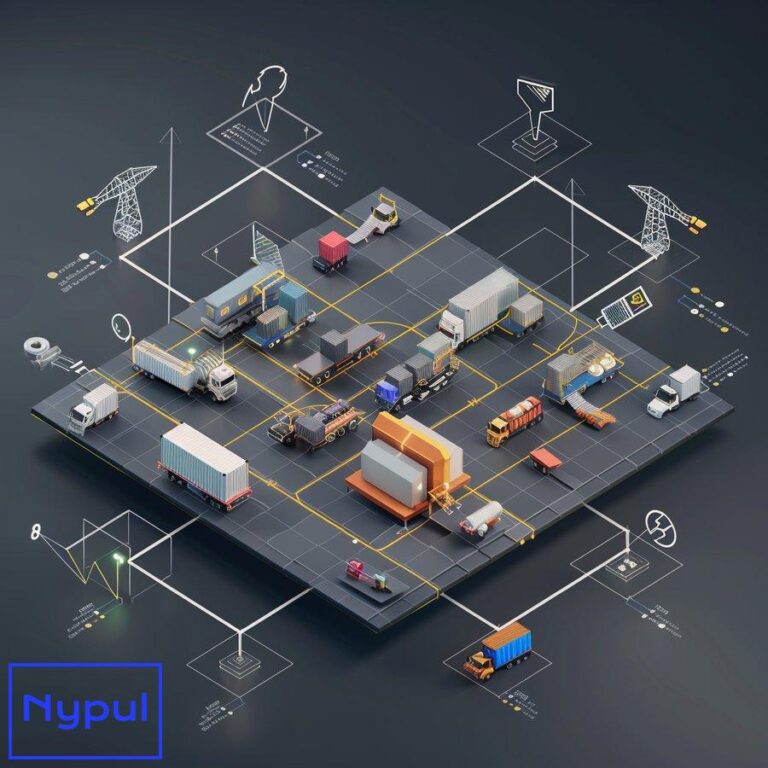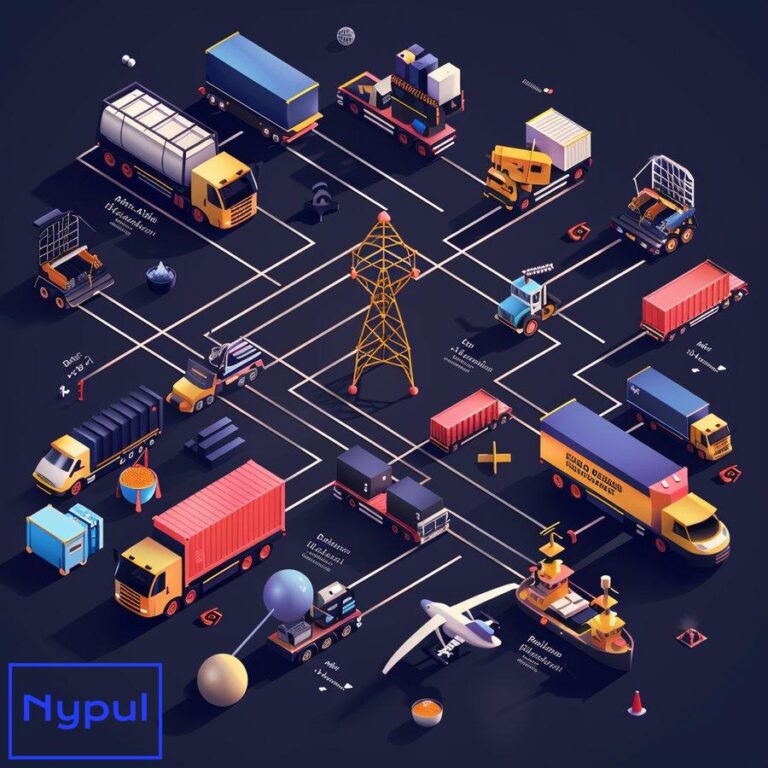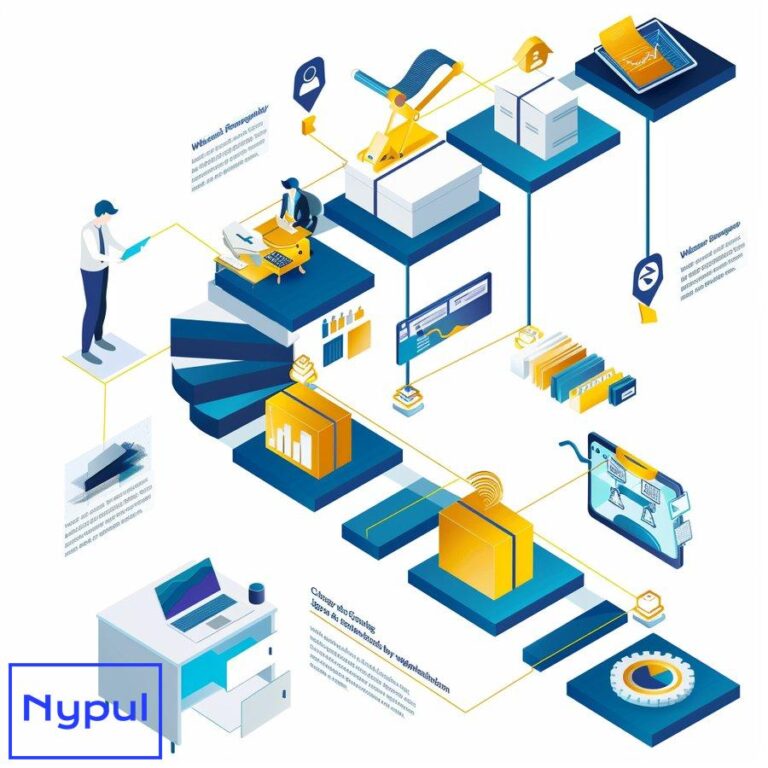What Is Vehicle Maintenance Basic
What is basic vehicle maintenance?
Basic vehicle maintenance encompasses a set of routine tasks and checks performed on a vehicle to ensure its optimal performance, safety, and longevity. These activities are fundamental to keeping a vehicle in good working condition and preventing minor issues from escalating into major problems.
The core components of basic vehicle maintenance include:
Fluid checks and changes: This involves regularly checking and replenishing essential fluids such as engine oil, coolant, brake fluid, power steering fluid, and windshield washer fluid. Engine oil, in particular, requires periodic changes to maintain engine health.
Tire care: Proper tire maintenance includes regular pressure checks, rotation, and alignment. These tasks help ensure even wear, improve fuel efficiency, and enhance vehicle handling and safety.
Battery maintenance: Checking battery connections for corrosion, cleaning terminals, and ensuring proper charge levels are crucial for reliable vehicle starting and electrical system function.
Brake system care: Regular inspection of brake pads, rotors, and brake fluid levels is essential for maintaining optimal braking performance and safety.
Filter replacements: Air filters, both for the engine and cabin, need periodic replacement to maintain engine efficiency and air quality inside the vehicle.
Belt and hose inspections: Regular checks of belts and hoses for wear, cracks, or looseness help prevent unexpected breakdowns.
Light and wiper blade checks: Ensuring all lights are functioning correctly and wiper blades are in good condition is crucial for visibility and safety.
Scheduled service adherence: Following the manufacturer’s recommended service schedule for more complex maintenance tasks is vital for long-term vehicle health.
Basic vehicle maintenance is not just about performing these tasks but also about developing a proactive approach to vehicle care. It involves being attentive to changes in vehicle performance, unusual noises, or warning lights, and addressing these issues promptly.
For vehicle owners, understanding basic maintenance can lead to significant benefits:
Cost savings: Regular maintenance can prevent costly repairs by catching issues early.
Improved safety: Well-maintained vehicles are less likely to experience critical failures that could lead to accidents.
Enhanced performance: Proper maintenance ensures the vehicle operates at its best, providing better fuel efficiency and overall performance.
Extended vehicle life: Consistent care can significantly extend the useful life of a vehicle, delaying the need for replacement.
Environmental benefits: A well-maintained vehicle typically produces fewer emissions, contributing to better air quality.
While some basic maintenance tasks can be performed by vehicle owners themselves, others may require professional expertise. The key is to strike a balance between DIY care and professional service, ensuring that all aspects of vehicle maintenance are adequately addressed.
Understanding and implementing basic vehicle maintenance is not just about following a checklist; it’s about developing a relationship with your vehicle. By becoming familiar with your vehicle’s needs and responding to them promptly, you can ensure a safer, more reliable, and more enjoyable driving experience.
Why is regular vehicle maintenance important?
Regular vehicle maintenance is crucial for several reasons, all of which contribute to the overall safety, reliability, and longevity of your vehicle. Understanding these reasons can help motivate vehicle owners to prioritize maintenance and reap its numerous benefits.
Safety enhancement:
Safety is paramount when it comes to vehicle operation. Regular maintenance plays a vital role in ensuring that all safety-critical systems are functioning correctly. This includes:
- Brake system checks: Ensuring brake pads, rotors, and fluid are in good condition for optimal stopping power.
- Tire inspections: Proper inflation, tread depth, and alignment contribute to better handling and reduced risk of blowouts.
- Light functionality: Working headlights, taillights, and turn signals are essential for visibility and communication on the road.
- Steering and suspension checks: These systems are crucial for maintaining control of the vehicle.
By keeping these systems in top condition, regular maintenance significantly reduces the risk of accidents caused by vehicle malfunction.
Reliability improvement:
A well-maintained vehicle is less likely to break down unexpectedly. This reliability is crucial for:
- Daily commutes: Avoiding the stress and inconvenience of unexpected breakdowns.
- Long trips: Ensuring your vehicle can handle extended journeys without issues.
- Emergency situations: Having a reliable vehicle when you need it most.
Regular maintenance helps identify potential problems before they become serious, allowing for timely repairs and reducing the likelihood of being stranded due to vehicle failure.
Cost reduction:
While maintenance does involve some costs, it’s generally far less expensive than major repairs or premature vehicle replacement. Regular maintenance saves money by:
- Preventing minor issues from escalating into major problems.
- Improving fuel efficiency, reducing fuel costs over time.
- Extending the lifespan of various vehicle components.
- Maintaining the vehicle’s value, which is beneficial for resale or trade-in.
A well-documented maintenance history can also increase a vehicle’s resale value, as it demonstrates to potential buyers that the vehicle has been well-cared for.
Performance optimization:
Regular maintenance keeps a vehicle running at its best. This includes:
- Engine performance: Regular oil changes and tune-ups keep the engine running smoothly.
- Fuel efficiency: Properly maintained vehicles typically have better fuel economy.
- Handling and ride quality: Regular alignments and suspension checks ensure a smooth, comfortable ride.
Optimal performance not only enhances the driving experience but also contributes to better fuel economy and reduced emissions.
Environmental responsibility:
Well-maintained vehicles are generally more environmentally friendly:
- Reduced emissions: Properly functioning engines and emissions systems produce fewer pollutants.
- Improved fuel efficiency: This leads to lower fuel consumption and, consequently, reduced carbon footprint.
- Longer vehicle lifespan: Extending a vehicle’s useful life reduces the environmental impact of manufacturing new vehicles.
Legal compliance:
Many jurisdictions require vehicles to meet certain standards for roadworthiness. Regular maintenance helps ensure that your vehicle:
- Passes mandatory inspections.
- Complies with emissions standards.
- Meets safety requirements for road use.
Failing to maintain a vehicle properly can result in fines or the inability to legally operate the vehicle.
Peace of mind:
Perhaps one of the most underrated benefits of regular maintenance is the peace of mind it provides. Knowing that your vehicle is in good condition allows you to:
- Drive with confidence.
- Plan trips without worrying about potential breakdowns.
- Feel secure about the safety of yourself and your passengers.
This psychological benefit can significantly enhance the overall ownership experience.
To illustrate the impact of regular maintenance on vehicle longevity and cost, consider the following comparison:
| Maintenance Approach | Average Vehicle Lifespan | Estimated Annual Repair Costs | Long-term Cost Implications |
|---|---|---|---|
| Regular Maintenance | 200,000+ miles | $500 – $700 | Lower overall ownership cost, higher resale value |
| Irregular Maintenance | 150,000 miles | $800 – $1,500 | Higher repair costs, more frequent breakdowns, lower resale value |
This table demonstrates that while regular maintenance involves consistent, smaller expenses, it leads to a longer vehicle lifespan and lower overall costs compared to irregular maintenance, which often results in more frequent and expensive repairs.
Regular vehicle maintenance is not just about keeping a car running; it’s an investment in safety, reliability, and long-term cost savings. By understanding and appreciating the importance of regular maintenance, vehicle owners can make informed decisions that benefit them financially, ensure their safety on the road, and contribute to environmental sustainability.
Which components require essential maintenance?
Essential vehicle maintenance involves regular attention to several key components. Understanding which parts of your vehicle require consistent care is crucial for maintaining its performance, safety, and longevity. Here’s a comprehensive look at the components that demand essential maintenance:
Engine:
The heart of your vehicle, the engine, requires meticulous care to function optimally. Essential maintenance tasks include:
- Oil changes: Regular oil changes are crucial for lubricating engine parts and removing harmful debris. Most vehicles require oil changes every 3,000 to 7,500 miles, depending on the type of oil used and driving conditions.
- Air filter replacement: A clean air filter ensures proper air flow to the engine, improving fuel efficiency and performance. Typically, air filters should be replaced every 15,000 to 30,000 miles.
- Spark plug replacement: Spark plugs ignite the fuel-air mixture in the engine. They usually need replacement every 30,000 to 100,000 miles, depending on the type.
- Timing belt replacement: In vehicles with timing belts, replacement is critical to prevent engine damage. This is typically needed every 60,000 to 100,000 miles.
Transmission:
The transmission system is vital for transferring power from the engine to the wheels. Maintenance includes:
- Fluid checks and changes: Transmission fluid should be checked regularly and changed according to the manufacturer’s recommendations, typically every 30,000 to 60,000 miles for automatic transmissions.
- Filter replacement: In vehicles with serviceable transmission filters, replacement is usually recommended during fluid changes.
Brake System:
The brake system is critical for vehicle safety and requires regular attention:
- Brake pad replacement: Brake pads typically need replacement every 30,000 to 70,000 miles, depending on driving habits and conditions.
- Rotor inspection and resurfacing/replacement: Rotors should be inspected during brake pad replacements and may need resurfacing or replacement.
- Brake fluid flush: Brake fluid should be flushed and replaced every 2 years or 30,000 miles to maintain system integrity.
Tires:
Proper tire maintenance is essential for safety, fuel efficiency, and performance:
- Pressure checks: Tire pressure should be checked monthly and adjusted as needed.
- Rotation: Tires should be rotated every 5,000 to 8,000 miles to ensure even wear.
- Alignment: Wheel alignment should be checked annually or if uneven tire wear is noticed.
- Replacement: Tires typically need replacement every 50,000 to 80,000 miles, depending on the type and driving conditions.
Suspension and Steering:
These systems ensure a smooth ride and proper vehicle control:
- Shock absorber/strut inspection: These components should be inspected regularly and replaced if leaking or worn, typically every 50,000 to 100,000 miles.
- Ball joint and tie rod end checks: These parts should be inspected during regular service intervals and replaced if worn.
Cooling System:
The cooling system prevents engine overheating:
- Coolant level checks: Coolant levels should be checked regularly and topped up as needed.
- Coolant flush: The cooling system should be flushed and refilled every 2 to 5 years or 30,000 to 50,000 miles.
- Hose and belt inspections: Coolant hoses and drive belts should be checked for wear and replaced as needed.
Electrical System:
The electrical system powers various vehicle functions:
- Battery maintenance: Batteries typically last 3 to 5 years. Regular checks for corrosion and proper charge are essential.
- Alternator checks: The alternator should be tested during regular service intervals to ensure it’s charging the battery properly.
Fuel System:
A well-maintained fuel system ensures optimal engine performance:
- Fuel filter replacement: Fuel filters typically need replacement every 20,000 to 40,000 miles.
- Fuel injector cleaning: This service may be recommended every 60,000 to 90,000 miles.
Exhaust System:
The exhaust system manages engine emissions and noise:
- Muffler and pipe inspections: Regular checks for rust, leaks, or damage are important.
- Catalytic converter checks: This component should be inspected during regular service intervals.
Lighting and Visibility Systems:
These systems are crucial for safe driving:
- Headlight alignment: Headlights should be checked and aligned annually.
- Wiper blade replacement: Wiper blades typically need replacement every 6 to 12 months.
- Washer fluid refills: Washer fluid should be topped up regularly.
To summarize the maintenance intervals for these essential components, consider the following table:
| Component | Maintenance Task | Typical Interval |
|---|---|---|
| Engine Oil | Change | 3,000 – 7,500 miles |
| Air Filter | Replace | 15,000 – 30,000 miles |
| Spark Plugs | Replace | 30,000 – 100,000 miles |
| Transmission Fluid | Change | 30,000 – 60,000 miles |
| Brake Pads | Replace | 30,000 – 70,000 miles |
| Tires | Rotate | 5,000 – 8,000 miles |
| Coolant | Flush | 30,000 – 50,000 miles |
| Battery | Replace | 3 – 5 years |
| Fuel Filter | Replace | 20,000 – 40,000 miles |
| Wiper Blades | Replace | 6 – 12 months |
These intervals are general guidelines and may vary based on vehicle make, model, and driving conditions. Always consult your vehicle’s owner’s manual for specific maintenance schedules.
By focusing on these essential components and adhering to recommended maintenance schedules, vehicle owners can significantly enhance the performance, safety, and longevity of their vehicles. Regular maintenance not only prevents unexpected breakdowns but also contributes to a more enjoyable and cost-effective ownership experience.
How often should vehicle maintenance be performed?

The frequency of vehicle maintenance depends on various factors, including the vehicle’s make and model, age, driving conditions, and usage patterns. While it’s crucial to follow the manufacturer’s recommended maintenance schedule, understanding the general guidelines for different maintenance tasks can help vehicle owners plan and budget for proper care.
Routine Maintenance (Every 3,000 to 7,500 miles or 3 to 6 months):
These tasks form the foundation of regular vehicle care:
- Oil and filter changes: The frequency depends on the type of oil used (conventional vs. synthetic) and driving conditions. Modern vehicles with synthetic oil can often go 7,500 miles between changes.
- Tire pressure checks and rotations: Check tire pressure monthly and rotate tires every 5,000 to 8,000 miles.
- Fluid level checks: This includes engine oil, coolant, brake fluid, power steering fluid, and windshield washer fluid.
- Visual inspections: Check for any visible leaks, wear on belts and hoses, and proper function of lights and wipers.
Intermediate Maintenance (Every 15,000 to 30,000 miles or annually):
These tasks are typically performed less frequently but are still crucial:
- Air filter replacement: Replace every 15,000 to 30,000 miles, or more frequently in dusty conditions.
- Brake system inspection: Check brake pads, rotors, and brake fluid levels.
- Battery check: Inspect for corrosion and check charge levels.
- Cabin air filter replacement: Typically every 15,000 to 25,000 miles.
- Transmission fluid check: Inspect levels and condition.
Major Maintenance (Every 30,000 to 60,000 miles or every few years):
These tasks involve more comprehensive checks and replacements:
- Spark plug replacement: Typically every 30,000 to 100,000 miles, depending on the type.
- Transmission fluid change: Usually every 30,000 to 60,000 miles for automatic transmissions.
- Fuel filter replacement: Generally every 20,000 to 40,000 miles.
- Coolant system flush: Typically every 30,000 to 50,000 miles or 2 to 5 years.
- Drive belts inspection and replacement: Check at 60,000 miles and replace if worn.
Long-Term Maintenance (60,000 miles and beyond):
These tasks are less frequent but often involve major component replacements:
- Timing belt replacement: If applicable, typically between 60,000 to 100,000 miles.
- Shock absorbers and struts: Inspect at 50,000 miles and replace if necessary.
- Major tune-up: Comprehensive inspection and service of all major systems.
To illustrate how maintenance frequency can vary based on driving conditions, consider the following comparison:
| Maintenance Task | Normal Driving Conditions | Severe Driving Conditions |
|---|---|---|
| Oil Change | Every 7,500 miles | Every 3,000-5,000 miles |
| Air Filter Replacement | Every 30,000 miles | Every 15,000-20,000 miles |
| Transmission Fluid Change | Every 60,000 miles | Every 30,000 miles |
| Brake Fluid Flush | Every 2 years | Annually |
| Coolant Flush | Every 5 years or 50,000 miles | Every 2-3 years or 30,000 miles |
Severe driving conditions include:
- Frequent short trips (less than 5 miles)
- Extreme temperatures (very hot or very cold)
- Dusty or sandy environments
- Stop-and-go traffic or idling for long periods## What tasks can be done at home versus by professionals?
Understanding which vehicle maintenance tasks can be performed at home and which require professional assistance is essential for vehicle owners. This knowledge helps save money, ensures safety, and maintains vehicle performance.
Tasks Suitable for Home Maintenance:
Many basic maintenance tasks can be easily performed by vehicle owners with minimal tools and knowledge. These include:
-
Oil Changes: Changing the engine oil and oil filter is a common task for DIY enthusiasts. It requires basic tools like a wrench, an oil filter wrench, and a drain pan. Regular oil changes keep the engine lubricated and running smoothly.
-
Tire Maintenance: Checking tire pressure, rotating tires, and replacing tires can often be done at home. A tire pressure gauge and a jack are typically all that’s needed. Proper tire care enhances safety and fuel efficiency.
-
Battery Maintenance: Checking battery connections for corrosion and cleaning terminals can be easily managed at home. If the battery needs replacement, many owners can handle this task as well.
-
Air Filter Replacement: Replacing the engine air filter is usually straightforward and can improve engine performance. Most vehicles have easily accessible air filters.
-
Wiper Blade Replacement: This is a simple task that can significantly enhance visibility during inclement weather. Most wiper blades come with instructions for easy installation.
-
Fluid Checks: Checking levels of essential fluids (engine oil, coolant, brake fluid, etc.) is a straightforward process that every vehicle owner should perform regularly.
-
Light Bulb Replacement: Replacing burnt-out headlights or taillights is often a simple task that can be done at home with basic tools.
Tasks Best Left to Professionals:
Certain maintenance tasks require specialized knowledge, tools, or equipment, making them better suited for professionals. These include:
-
Complex Engine Repairs: Tasks such as timing belt replacement, head gasket repairs, or engine rebuilds require advanced mechanical skills and tools.
-
Transmission Service: Transmission fluid changes may seem straightforward, but they often involve complex procedures that are best handled by professionals to avoid damaging the transmission.
-
Brake System Overhaul: While changing brake pads may be manageable for some DIYers, complete brake system inspections or replacements should be performed by qualified technicians to ensure safety.
-
Electrical System Repairs: Diagnosing electrical issues often requires specialized diagnostic equipment and expertise that most vehicle owners do not possess.
-
Suspension Work: Repairing or replacing suspension components like struts or shocks requires specialized tools and knowledge of alignment specifications.
-
Advanced Diagnostics: Modern vehicles come equipped with complex computer systems that require specialized diagnostic tools to troubleshoot issues effectively.
To help clarify which tasks are appropriate for home maintenance versus professional service, consider the following table:
| Maintenance Task | Home Maintenance | Professional Service |
|---|---|---|
| Oil Change | Yes | No |
| Tire Rotation | Yes | No |
| Brake Pad Replacement | Yes (with caution) | Yes |
| Battery Replacement | Yes | No |
| Transmission Fluid Change | No | Yes |
| Engine Diagnostics | No | Yes |
| Complex Engine Repairs | No | Yes |
| Wiper Blade Replacement | Yes | No |
By understanding which tasks can be performed at home and which should be left to professionals, vehicle owners can make informed decisions about their maintenance routines. This approach not only saves money but also ensures that critical repairs are handled correctly to maintain vehicle safety and performance.
Which tools are necessary for basic vehicle maintenance?
Having the right tools is essential for performing basic vehicle maintenance effectively and safely. While some tasks may require specialized equipment, many common maintenance activities can be accomplished with a basic set of tools. Here’s a breakdown of the necessary tools for various maintenance tasks:
Basic Hand Tools:
-
Socket Set: A comprehensive socket set is crucial for loosening and tightening bolts on various components such as the oil pan, battery terminals, and more.
-
Wrenches: Both open-end and box-end wrenches are necessary for various fasteners throughout the vehicle.
-
Screwdrivers: A set of Phillips and flathead screwdrivers is essential for removing covers, clamps, and other components.
-
Pliers: Needle-nose pliers can help with reaching tight areas while regular pliers assist in gripping various parts.
-
Torque Wrench: This tool ensures that bolts are tightened to the manufacturer’s specified torque settings, which is particularly important for critical components like wheel lug nuts.
Fluid Management Tools:
-
Oil Filter Wrench: This tool makes it easier to remove oil filters during oil changes.
-
Funnel: A funnel helps prevent spills when adding fluids such as oil or coolant.
-
Drain Pan: A drain pan collects used fluids during oil changes or coolant flushes to prevent spills on the ground.
Tire Maintenance Tools:
-
Tire Pressure Gauge: This tool measures tire pressure accurately to ensure proper inflation.
-
Jack and Jack Stands: A hydraulic jack lifts the vehicle safely while jack stands provide stability during tire changes or undercar inspections.
-
Lug Wrench: This tool is used to loosen and tighten lug nuts on wheels during tire changes.
Safety Equipment:
-
Gloves: Mechanic gloves protect hands from dirt, grease, and sharp edges while working on vehicles.
-
Safety Glasses: Protecting your eyes from debris while working under the hood or around tires is crucial.
-
Shop Towels/Rags: These are useful for cleaning spills or wiping down components during maintenance tasks.
Diagnostic Tools (Optional):
While not strictly necessary for basic maintenance, having access to diagnostic tools can greatly enhance your ability to troubleshoot issues:
-
OBD-II Scanner: This device reads trouble codes from your vehicle’s onboard diagnostics system, helping identify issues quickly.
-
Multimeter: Useful for testing electrical systems such as battery voltage or continuity in circuits.
To summarize the essential tools needed for basic vehicle maintenance, consider the following table:
| Tool Type | Specific Tools |
|---|---|
| Hand Tools | Socket set, wrenches, screwdrivers |
| Fluid Management Tools | Oil filter wrench, funnel, drain pan |
| Tire Maintenance Tools | Tire pressure gauge, jack & stands |
| Safety Equipment | Gloves, safety glasses |
| Diagnostic Tools (Optional) | OBD-II scanner, multimeter |
By equipping yourself with these essential tools, you’ll be better prepared to perform routine maintenance tasks effectively. Proper tool selection not only makes maintenance easier but also enhances safety while working on your vehicle.
How do driving habits affect maintenance needs?
Driving habits significantly influence a vehicle’s maintenance needs and overall longevity. Understanding how different driving behaviors impact wear and tear on various components can help vehicle owners adopt practices that minimize damage and reduce maintenance costs. Here’s an exploration of how driving habits affect vehicle maintenance:

Aggressive Driving
Aggressive driving behaviors—such as rapid acceleration, hard braking, and sharp cornering—can lead to increased wear on several key components:
-
Brakes: Frequent hard braking wears down brake pads more quickly than gentle braking. This can lead to more frequent replacements of both pads and rotors.
-
Tires: Aggressive acceleration and cornering result in uneven tire wear, necessitating more frequent rotations and replacements.
-
Suspension System: Sudden stops and sharp turns put extra stress on suspension components like shocks and struts, leading to premature wear.
Short Trips
Frequent short trips—defined as journeys less than 5 miles—can negatively affect engine health due to insufficient warm-up time:
-
Engine Oil Contamination: Short trips prevent the engine from reaching optimal operating temperature. As a result, moisture accumulates in the oil, leading to contamination that requires more frequent oil changes.
-
Battery Drainage: Engines rely on alternators to recharge batteries while running. Short trips may not provide enough time for batteries to recharge fully after starting.
Highway Driving
Conversely, consistent highway driving tends to be easier on vehicles compared to stop-and-go city driving:
-
Engine Efficiency: Highway driving allows engines to operate at optimal temperatures over longer periods. This reduces wear compared to constant cold starts associated with short trips.
-
Fuel Efficiency: Vehicles generally achieve better fuel economy at highway speeds than in urban traffic conditions.
Load Carrying
Carrying heavy loads or towing trailers places additional strain on various systems within a vehicle:
-
Suspension System Stress: Increased weight affects suspension components such as springs and shocks; these may need more frequent inspection or replacement.
-
Braking System Strain: Heavier loads require longer stopping distances; therefore brake systems may experience accelerated wear under these conditions.
Environmental Factors
Driving conditions also play a role in how often maintenance is needed:
-
Dusty Roads vs. Paved Roads: Driving on unpaved or dusty roads leads to quicker accumulation of dirt in air filters; these should be replaced more frequently compared to those driven primarily on paved roads.
-
Extreme Weather Conditions: Hot climates may necessitate more frequent coolant checks due to increased engine temperatures; cold climates could lead to more frequent battery checks due to potential freeze issues.
Summary Table
To illustrate how different driving habits impact maintenance needs, consider the following table:
| Driving Habit | Impact on Vehicle Maintenance |
|---|---|
| Aggressive Driving | Increased brake wear; uneven tire wear; suspension stress |
| Short Trips | More frequent oil changes; battery drainage |
| Highway Driving | Less frequent maintenance; improved fuel efficiency |
| Heavy Load Carrying | Increased strain on brakes; suspension wear |
| Dusty Conditions | More frequent air filter replacements |
By being mindful of driving habits and their effects on vehicle maintenance needs, owners can take proactive steps to mitigate wear and extend their vehicles’ lifespan. Adopting smoother driving techniques and being aware of environmental factors can lead to significant savings in both time spent on maintenance tasks and overall repair costs.
What are common vehicle maintenance mistakes to avoid?

Vehicle owners often make several common mistakes when it comes to maintaining their vehicles. Avoiding these pitfalls can significantly enhance safety, performance, and longevity while reducing repair costs over time. Here are some prevalent mistakes along with suggestions on how to avoid them:
Neglecting Regular Maintenance
One of the most significant mistakes is failing to adhere to a regular maintenance schedule. Skipping routine checks such as oil changes or brake inspections can lead to severe issues down the line.
How to Avoid:
Follow the manufacturer’s recommended service intervals outlined in your owner’s manual. Set reminders for routine checks based on mileage or time intervals.
Ignoring Warning Lights
Many drivers overlook warning lights on their dashboards until they become serious problems. Ignoring these indicators can lead to major repairs or even accidents.
How to Avoid:
Pay attention to warning lights immediately upon illumination. Consult your owner’s manual for guidance on what each light indicates and take appropriate action promptly.
Using Incorrect Fluids
Using non-recommended fluids (e.g., engine oil or coolant) can harm your vehicle’s systems over time. Each component has specific fluid requirements outlined by manufacturers.
How to Avoid:
Always refer to your owner’s manual when selecting fluids for your vehicle. Use only fluids that meet manufacturer specifications.
Overlooking Tire Maintenance
Tires play a crucial role in safety but are often neglected regarding pressure checks or rotations. Poor tire care affects handling and increases fuel consumption.
How to Avoid:
Check tire pressure monthly using a gauge; rotate tires every 5,000–8,000 miles based on manufacturer recommendations. Inspect tread depth regularly using the penny test or tread depth gauge.
Delaying Repairs
Putting off repairs due to cost concerns can lead minor issues into major problems requiring costly fixes later on—such as ignoring small leaks until they become significant failures.
How to Avoid:
Address small repairs promptly before they escalate into larger issues. Budget for regular upkeep so you’re prepared when unexpected repairs arise.
Skipping Seasonal Checks
Seasonal changes bring unique challenges (e.g., winter weather). Failing to prepare your vehicle accordingly may leave you stranded during adverse conditions.
How to Avoid:
Conduct seasonal inspections before major weather changes—check antifreeze levels before winter; inspect wipers before rainy seasons; ensure AC functionality before summer heat hits.
DIY Overconfidence
While DIY repairs save money when done correctly; overestimating one’s skills may lead inexperienced individuals into dangerous situations—especially with complex systems like brakes or transmissions where mistakes could cause accidents.
How To Avoid:
Know your limits! If unsure about completing any task safely consult professionals who possess expertise in automotive repair rather than risking injury/vehicle damage attempting it yourself without proper knowledge/tools required!
Summary Table of Common Mistakes
To summarize these common mistakes along with their solutions consider this table:
| Common Mistake | Consequence | Solution |
|---|---|---|
| Neglecting Regular Maintenance | Severe mechanical failures | Follow recommended service intervals |
| Ignoring Warning Lights | Major repairs needed | Address lights immediately |
| Using Incorrect Fluids | Damage caused | Refer manual & use recommended fluids |
| Overlooking Tire Maintenance | Poor handling & increased fuel use | Regularly check pressure & rotate tires |
| Delaying Repairs | Escalating repair costs | Address small repairs promptly |
| Skipping Seasonal Checks | Vehicle unprepared for conditions | Conduct seasonal inspections |
| DIY Overconfidence | Risky mistakes | Know limits & consult professionals |
By avoiding these common mistakes through proactive measures taken towards proper care of their vehicles owners will not only save money but also ensure safer driving experiences while extending overall lifespan!
How have technological advancements improved vehicle maintenance?
Technological advancements have revolutionized vehicle maintenance practices over recent years—enhancing efficiency accuracy reliability across various aspects from diagnostics through repairs! Here’s an overview of how technology has transformed traditional approaches into modern solutions benefiting both consumers mechanics alike!

Advanced Diagnostic Tools
Modern vehicles come equipped with sophisticated onboard diagnostic systems (OBD-II) capable of monitoring numerous parameters related engine performance emissions among others! These systems provide real-time data allowing mechanics/owners identify potential issues early before they escalate into serious problems requiring costly repairs!
Benefits:
Quickly diagnosing problems reduces downtime improves accuracy when pinpointing faults resulting in faster resolutions!
Predictive Maintenance Technology
Emerging technologies utilizing artificial intelligence (AI) predictive analytics enable manufacturers/service providers predict when specific components will require servicing based historical data collected from similar vehicles under comparable conditions!
Benefits:
This proactive approach minimizes unexpected breakdowns enhances customer satisfaction by ensuring timely interventions based actual usage patterns rather than relying solely upon traditional schedules!
Mobile Apps & Telemetry Systems
Mobile applications provide users access vital information regarding their vehicles including service reminders alerts about upcoming scheduled services! Additionally telemetry systems allow continuous monitoring performance metrics sending alerts directly user smartphones if any irregularities detected!
Benefits:
Increased awareness facilitates timely action taken towards necessary preventative measures ultimately leading healthier longer-lasting vehicles!
Enhanced Repair Techniques
Advancements such as laser alignment technology computerized balancing machines have streamlined processes traditionally requiring extensive manual labor resulting improved accuracy reduced turnaround times!
Benefits:
Improved precision reduces chances errors occurring during repairs enhances overall quality workmanship provided customers!
Online Resources & Communities
The internet provides vast resources including forums instructional videos enabling DIY enthusiasts learn new skills troubleshoot problems effectively! Online communities connect individuals share experiences tips best practices enhancing collective knowledge surrounding automotive care!
Benefits:
Accessing shared knowledge empowers individuals take charge maintaining their own vehicles confidently while fostering sense community among car enthusiasts!
Summary Table of Technological Advancements
To summarize key technological advancements impacting modern-day automotive maintenance consider this table highlighting benefits provided by each advancement discussed above!
| Technological Advancement | Description | Benefits |
|---|---|---|
| Advanced Diagnostic Tools | OBD-II systems monitor performance | Quick diagnosis reduces downtime |
| Predictive Maintenance Technology | AI predicts component servicing needs | Minimizes unexpected breakdowns |
| Mobile Apps & Telemetry Systems | Provides alerts/reminders via smartphones | Increases awareness facilitates timely action |
| Enhanced Repair Techniques | Laser alignment/computerized balancing | Improved precision reduces errors |
| Online Resources & Communities | Access instructional content/forums | Empowers individuals fosters community |
Technological advancements continue shaping future landscape automotive industry enabling safer efficient practices benefiting all stakeholders involved! By embracing these innovations consumers mechanics alike will enjoy enhanced experiences maintaining their vehicles ensuring optimal performance longevity throughout ownership journey!






